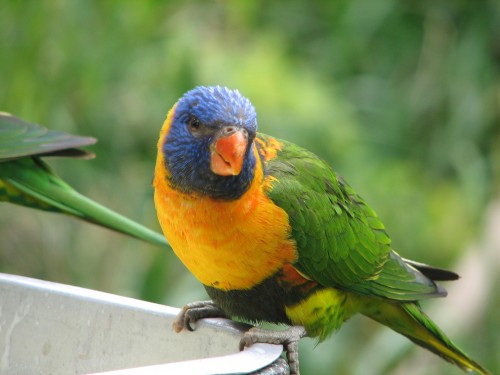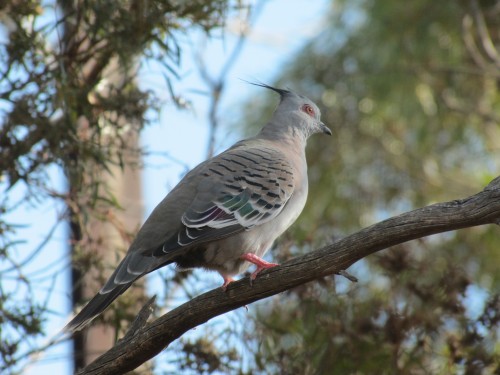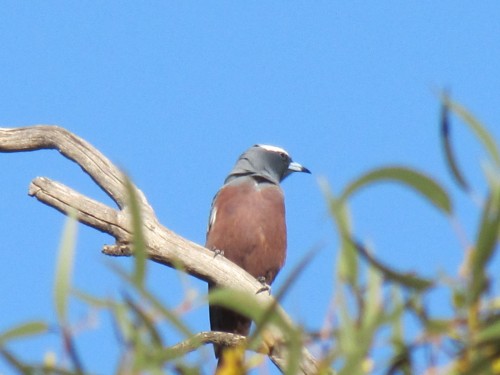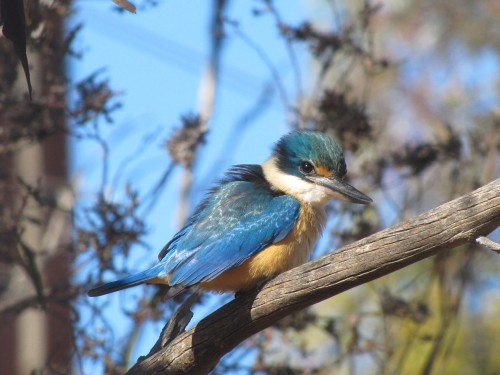Favourite Birding Spot #7 Ferries McDonald Conservation Park
Ferries-McDonald Conservation Park is one of the closest large parks of its kind near where I live. It is about 20 km south west of Murray Bridge and about 60 km south east of our state capital, Adelaide.
The park has easy access from two good dirt roads; one road bisects the park, the other follows the southern boundary. Update 2015: a new sealed road bisects the park in a north-south direction. There are several walking tracks through the interior of the park, including one established by the Friends Group a few years ago. There are no toilets or camping facilities within the park.
The park is predominantly mallee habitat. Many small native bushes flower in the spring time making it an attractive place for birds and a good place for birders to visit. I have recorded quite a variety of honeyeaters in the park, including
- Singing Honeyeater,
- White-plumed Honeyeater,
- Yellow-plumed Honeyeater,
- Purple-gaped Honeyeater,
- White-eared Honeyeater,
- Brown-headed Honeyeater and
- Red Wattlebirds.
Other birds I commonly see in the park include:
- Superb Fairy-wrens,
- Golden whistlers,
- Rufous whistlers
- Yellow-rumped thornbills,
- Bronzewing pigeons,
- Crested pigeon
- several kinds of robin and
- White-browed Babblers.
The parrots include:
- Purple-crowned lorikeets,
- Musk lorikeets
- Galahs and
- Mallee Ringnecks.
In all I have recorded over 60 different species.
This park is one of only a few local sites for the highly endangered species, the Mallee Fowl. I have only seen this bird once in the park but I have found several active nesting mounds (see photo above). For more information about this bird click on the link below or click here.
Related Articles:
- Birds of Monarto Conservation Park – this park is about 5km north of Ferries McDonald CP
- What Kind of Duck was that? An amusing encounter with a Mallee Fowl
- Mallee Fowl – the Incubator Bird – lots of information about the Mallee Fowl and its habits, including its amazing nest.
This article was last updated in July 2015.
Do I need a camera?
Frequently asked questions about birding #13
Do I need a camera when I go birding?
No.
But I guarantee you will be saying “If only I had a camera” far too many times.
I carry a small camera bag containing a small digital camera when I go birding. They are so small, light and easy to use. I’ve got so many wonderful photos over recent months that it has totally renewed my interest in photography.
A word of warning: always take spare batteries. I had a wonderful opportunity to take a photo of a rare bird once and the batteries died just a few minutes before. I now carry TWO sets of spare batteries! I’m a slow learner.
Update November 2013:
Since writing this article I have taken many thousands of photos, both here in Australia and overseas. I have included the best of them on this site. Browse through the archives for articles which might interest you; most have at least one photo. Below is a selection of just a few.
Why have a bird note book?
Frequently asked questions about birding #12
What do I write in the notebook?
So you have decided to always carry a notebook and pen or pencil while out birding in the field.
What do you write in the notebook?
I usually write the date, the time, the location, the GPS reading, a list of every species seen and an estimate of how many birds present eg 30 pink Galahs, 3 Wood Ducks, 2 Crested Pigeons and a Partridge in a pear tree – oops – a partridge? I’d better take a few notes and do a quick sketch of its main features.
Here is another use for the notebook. I know that there are no partridges in Australia so I take notes. That way I can check in my field guides later when I get home and check my notes against the field guide notes. Oh – that should have been Partridge Pigeon. Of course.
If I had seen a Partridge Pigeon I would have been very excited. They are only found in the extreme northern edge of Australia, a long way from home. Any seen around here in Murray Bridge, South Australia would have to have escaped from someone’s aviary. I’m not sure if this species is kept in aviaries here in South Australia. One would have to have a special permit because this bird in vulnerable in its natural habitat.
This post was updated on 22nd October 2015.
A Cloud of Kites
I am trying to go for a morning walk every day.
For the good of my health.
Morning walks are very productive birding times here in Australia. Yesterday I saw and heard the usual suspects: honeyeaters, Galahs, Crested Pigeons, Little Ravens, Yellow Rumped Thornbills, House Sparrows and Common Starlings.
From time to time we have the odd Black Kite or two glide silently over head as we work in the garden. Rarely more than two but sometimes three or four can be seen at the one time. I was taken a bit by surprise to count a loose flock of 22 Black Kites circling at a spot nearby. This is unusual around here, though on one occasion a few years ago I did see at least 50 in one location. I assumed that there was a dead animal lying somewhere nearby, or perhaps a rubbish dump in the vicinity.
My experience with this species in Australia is for single birds or up to 3 or 4 together. I understand that they can congregate in large numbers elsewhere in Australia and in other parts of the world. On my visit to Thailand and Nepal last December-January I saw small flocks only. It seemed to be the main raptor in Kathmandu.
There probably isn’t a collective noun for Black Kites so I’ve made one up. A “Cloud of Kites” sounds good to me – it is perhaps an act of apt alliteration and acidic assonance? Kites are not mentioned in the Wikipedia entry on collective nouns for birds.
A bird of a different colour
I recently had a picnic lunch at Clonlea Park in Gawler, South Australia. Gawler is a large town an hour north of Adelaide. The park consists of tennis courts, barbecue areas, extensive areas of lawn and is bordered by the Gawler River. We enjoy having lunch or a cuppa here on our way to visit our daughter in Clare. The bird life is interesting without being spectacular.
Australian Magpies, Wood Ducks, Adelaide Rosellas and Noisy Miner are the most common species present. Crested Pigeons and Spotted Turtledoves are likewise common. Masked Lapwings are sometimes seen on the lawns and Little Pied Cormorants along the river. Red Wattlebirds and White Plumed Honeyeaters are often seen foraging in the tree canopies. Striated Pardalotes are more often heard than seen.
On my most recent visit I was enjoying some lunch when my attention was drawn to a strange looking bird feeding on the grass some fifty metres away. I did not immediately recognise it so I scrambled for the binoculars. It turned out to be a white coloured Cockatiel (see photo), not a species I was expecting to see here. While it was not entirely impossible to see a Cockatiel here, the fact it was a white individual means that someone local is missing their pet bird.
Cockatiels are bred by some aviculturalists in a range of colour variations. Why they do this always puzzles me because their natural colours are quite beautiful. We had a natural coloured one when I was quite young and I was able to teach it to speak a number of words. They make quite endearing pets and are quite at home living inside one’s house, like the pet of close friends. Theirs takes delight in harassing their two cats who also spend most of their time indoors.






